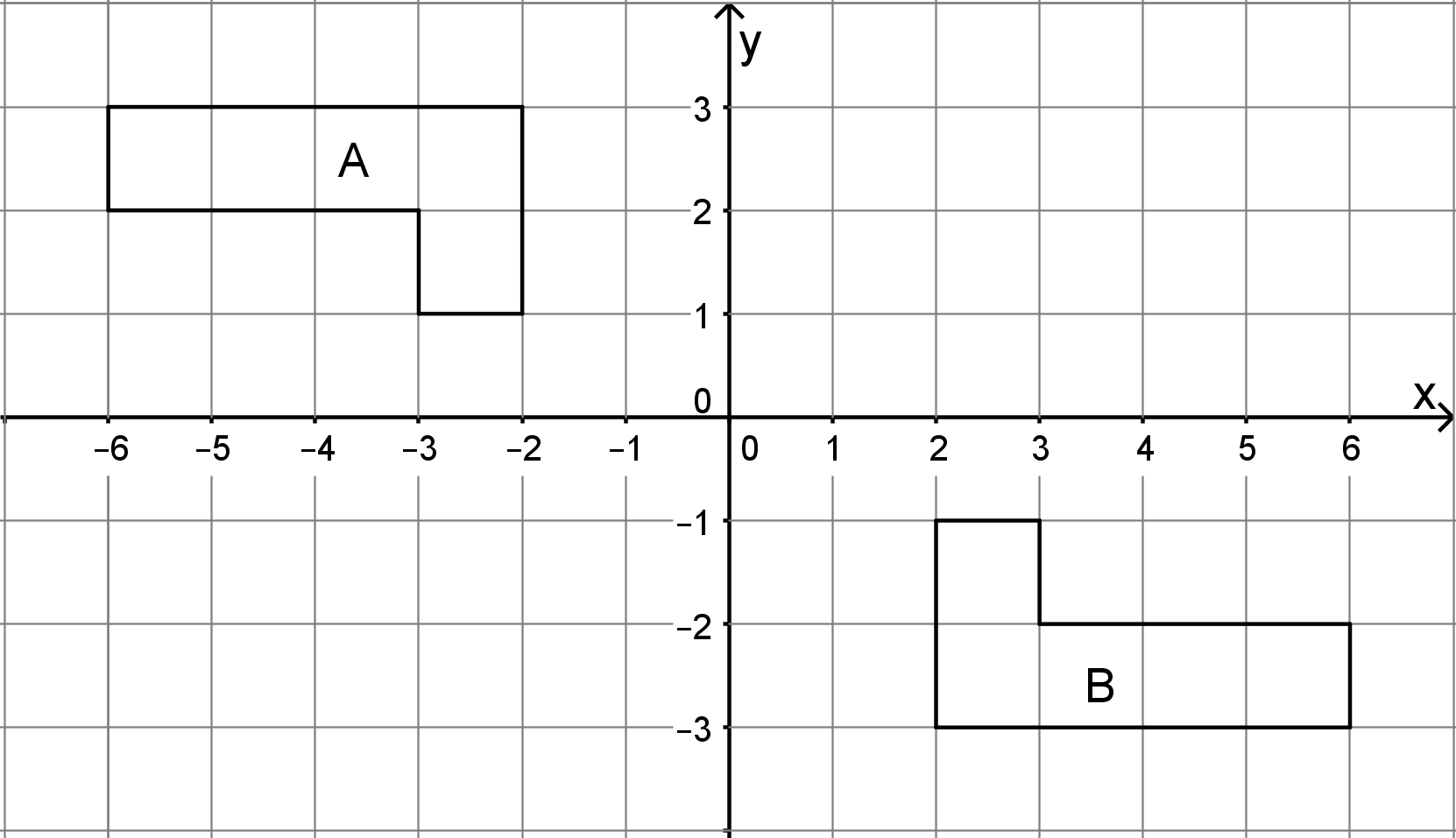Lesson 10
What Is the Same?
Problem 1
If two rectangles have the same perimeter, do they have to be congruent? Explain how you know.
Solution
For access, consult one of our IM Certified Partners.
Problem 2
Draw two rectangles that have the same area, but are not congruent.
Solution
For access, consult one of our IM Certified Partners.
Problem 3
For each pair of shapes, decide whether or not the two shapes are congruent. Explain your reasoning.
Solution
For access, consult one of our IM Certified Partners.
Problem 4
-
Reflect Quadrilateral A over the \(x\)-axis. Label the image quadrilateral B. Reflect Quadrilateral B over the \(y\)-axis. Label the image C.

-
Are Quadrilaterals A and C congruent? Explain how you know.
Solution
For access, consult one of our IM Certified Partners.
Problem 5
The point \((\text-2,\text-3)\) is rotated 90 degrees counterclockwise using center \((0,0)\). What are the coordinates of the image?
\((\text-3,\text-2)\)
\((\text-3,2)\)
\((3,\text-2)\)
\((3,2)\)
Solution
For access, consult one of our IM Certified Partners.
(From Unit 1, Lesson 5.)Problem 6
Describe a rigid transformation that takes Polygon A to Polygon B.

Solution
For access, consult one of our IM Certified Partners.
(From Unit 1, Lesson 6.)
